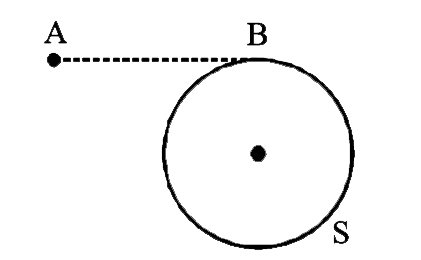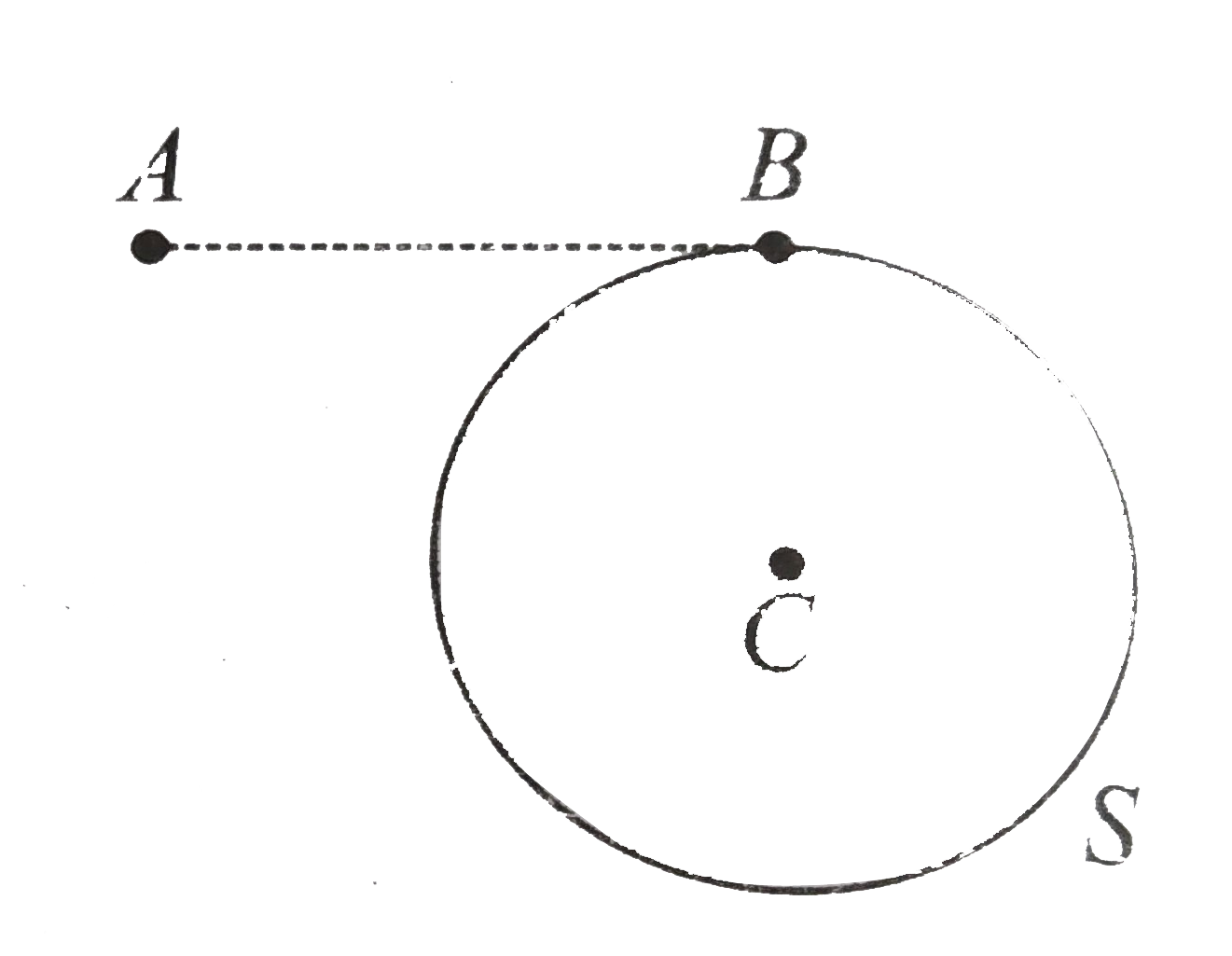Conisder a neutral conducting sphere. A poistive point charge is placed outisde the sphere. The net charge on the sphere is then
negative and distributed uniformly over the surface of the sphere
negative and appears only at the point on the sphere closest to the point charge.
negative and distributed non-uniformly over the entire surface of the sphere.
zero
The correct Answer is:D
Positive point charge is placed outside the sphere, hence it can only induce the charge on conducting sphere. We know that in case of induction process there is no transfer of charge and no net charge is created on the object. Free electrons are redistributed in conducting object due to the presence of positive point charge in vicinity. Negative charge appears on sphere close to the positive point charge and equal amount of positive charge can be seen on the other side of sphere.
Topper's Solved these Questions
- ELECTRIC CHARGES AND FIELDS BOOK - MODERN PUBLICATIONCHAPTER - ELECTRIC CHARGES AND FIELDS EXERCISE - COMPETITION FILE ( Objective Question (C.MCQ))
19 Videos
- ELECTRIC CHARGES AND FIELDS BOOK - MODERN PUBLICATIONCHAPTER - ELECTRIC CHARGES AND FIELDS EXERCISE - COMPETITION FILE ( Objective Question (D.MCQ) Passage )
10 Videos
- ELECTRIC CHARGES AND FIELDS BOOK - MODERN PUBLICATIONCHAPTER - ELECTRIC CHARGES AND FIELDS EXERCISE - COMPETITION FILE ( Objective Question (BB.MCQ))
22 Videos
- DUAL NATURE OF RADIATION AND MATTER BOOK - MODERN PUBLICATIONCHAPTER - DUAL NATURE OF RADIATION AND MATTER EXERCISE - CHAPTER PRACTICE TEST
15 Videos
- ELECTROMAGNETIC INDUCTIONBOOK - MODERN PUBLICATIONCHAPTER - ELECTROMAGNETIC INDUCTIONEXERCISE - CHAPTER PRACTICE TEST FOR BOARD EXAMINATION
14 Videos
Similar Questions
Charged Conducting Sphere
View Solution7S is a solid neutral conducting sphere. A point charge q of 1 × 10–6 C is placed at point A. C is the centre of sphere and AB is a tangent. BC = 3m and AB = 4m.
(1) The electric potential of the conductor is 1.8 kV
(2) The electric potential of the conductor is 2.25 kV
(3) The electric potential at B due to induced charges on the sphere is – 0.45 kV
(4) The electric potential at B due to induced charges on the sphere is 0.45 kV

View Solution
Knowledge Check
Consider a neutral conducting sphere. A positive point charge is placed outside the sphere. The net charge on the sphere is then
ANegative and uniformly distributed over the surface of sphereBPositive and uniformly distributed over the surface of sphereCNegative and appears at a point the surface of sphere closest to point chargeDZeroThere is a cubical cavity inside a conducting sphere of radius R. A positive point charge Q is placed at the centre of the cube and another positive charge q is placed at a distance 1(>R) from the centre of the sphere. The sphere is earthed

Net charge on the outer surface of conducting sphere isA+QBQ−qR/1C−qR/IDnoneS is a solid neutral conducting sphere. A point charge q of 1×10−6C is placed at point, C is the center of sphere, and AB is a tangent. BC = 3 m and B = 4m.
 AThe electric potential of the conductor is 1.8 kV.BThe electirc potential of the conductor is 2.25 kV.CThe electric potential at B due to induced charges on the sphere is −0.45kV.DThe electric potential at B due to induced charges on the sphere is 0.45kV.
AThe electric potential of the conductor is 1.8 kV.BThe electirc potential of the conductor is 2.25 kV.CThe electric potential at B due to induced charges on the sphere is −0.45kV.DThe electric potential at B due to induced charges on the sphere is 0.45kV.
A conducting sphere carrying charge Q is surrounded by a spherical conducting shell.
a. What is the net charge on the inner surface of the shell?
b. Another charge q is placed outside the shell. Now, what is the net charge on the inner surface of the shell?
c. If q is moved to a position between the shell and the sphere, what is the net charge on the inner surface of the shell?
d. Are your answer valid if the sphere and shell are not concentric?
View SolutionInside a neutral hollow conducting sphere of radius X and centre C, a point charge q is placed as shown in the figure. Another point charge q1, is placed outside the sphere at distance d from centre. The net- electrostatic force on charge q placed at the centre is K=14πε0

View SolutionThe centre of neutral conducting sphere of radius "R" is at distance 'd' from a point charge "Q" .The potential of the sphere is
View SolutionA positive point charge q is brought near a neutral metal sphere.
View SolutionA conducting sphere of radius r has a charge . Then .
View Solution
